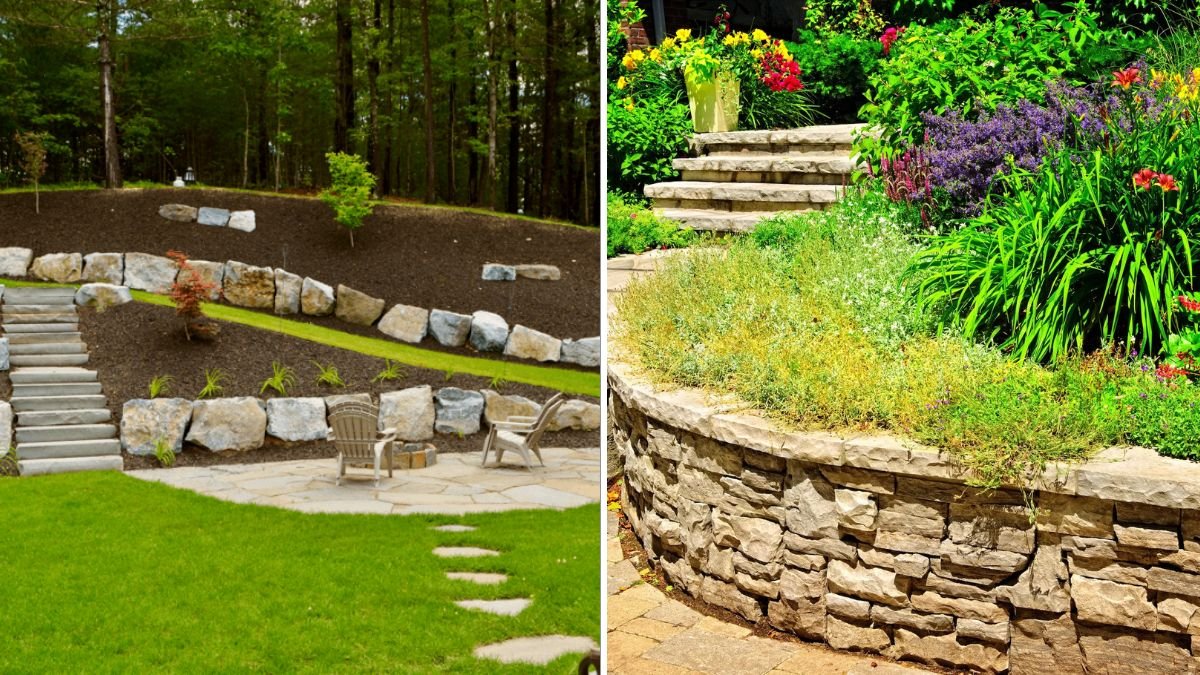A sloped backyard can feel like both a blessing and a challenge. On one hand, it provides natural interest and unique design potential. On the other hand, it often brings issues like soil erosion, drainage problems, and difficulty mowing or planting. But with thoughtful landscaping, a sloped yard can be transformed into one of the most stunning features of your property. Instead of fighting against the incline, embrace it with creative solutions that make the slope both functional and beautiful.
Here are 7 landscaping ideas for sloped backyards that combine practicality with design flair.
1. Terraced Gardens for Structure and Beauty
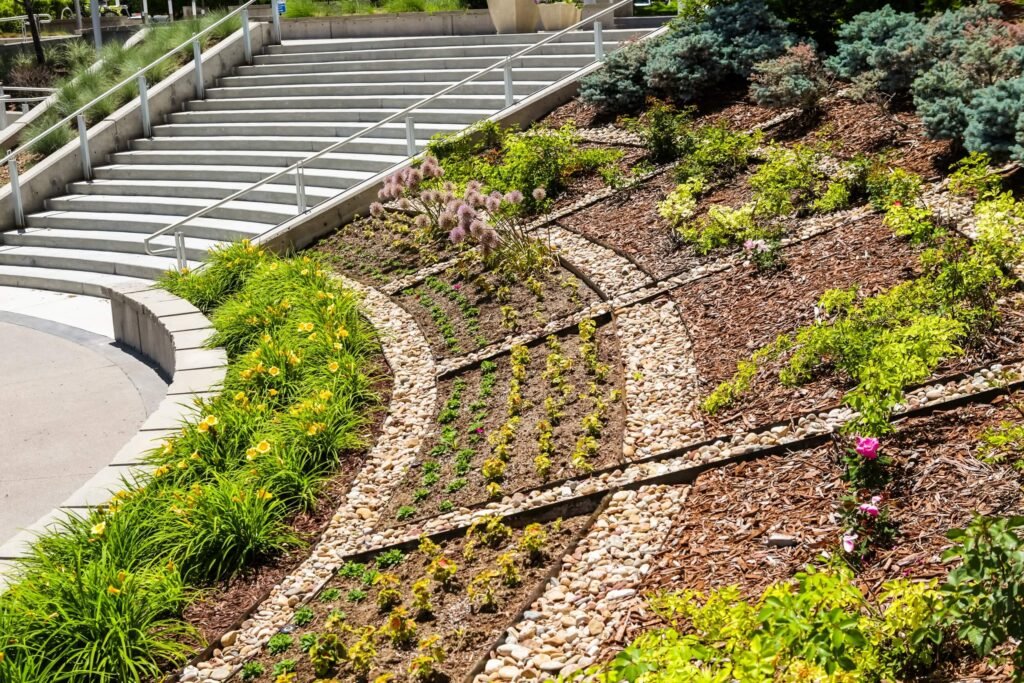
One of the most effective ways to work with a slope is to build terraces. By creating multiple flat levels, you turn unusable ground into planting areas or sitting spaces.
- Benefits: Prevents soil erosion, adds structure, and creates distinct zones for different uses.
- Design tip: Retaining walls can be built from stone, brick, concrete blocks, or timber, depending on your budget and style preference. Natural stone gives a rustic look, while concrete pavers feel modern.
- Planting ideas: Use low-maintenance perennials and ground covers on upper terraces and reserve lower ones for vegetables, herbs, or a patio.
Terracing does require some investment, but it offers long-term stability and dramatically boosts curb appeal.
2. Stone or Timber Steps for Accessibility
Slopes can make navigation tricky, but well-designed steps turn a backyard into an inviting, walkable space.
- Why it works: Steps provide safe access while breaking up the steepness of a hill.
- Material choices:
- Natural stone steps blend seamlessly into a rustic garden.
- Timber sleepers or railroad ties create a more casual, cottage-style look.
- Concrete steps are durable and versatile for modern yards.
- Design tip: Incorporate plantings along the edges of steps—like creeping thyme or lavender—for a soft, fragrant border.
By adding lighting along the stairs, you ensure safe passage at night while highlighting the slope’s character.
3. Rock Gardens for Low-Maintenance Interest
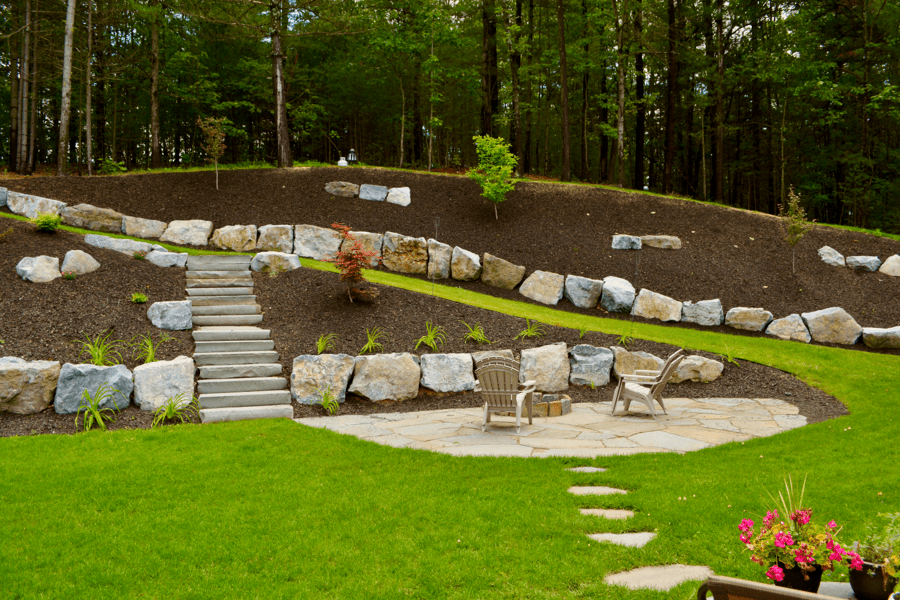
If your slope is too steep for traditional gardens, a rock garden may be the perfect solution. Large boulders and smaller stones can be arranged to hold soil in place while creating visual interest.
- Why it works: Rocks help control erosion, require little upkeep, and provide a backdrop for alpine plants and succulents.
- Best plants: Sedum, creeping phlox, hens-and-chicks, ornamental grasses, and other drought-tolerant perennials thrive in rocky soil.
- Design tip: Position larger rocks toward the base and scatter smaller stones higher up for a natural “tumbled” effect.
Rock gardens are a great choice if you want beauty without the labor of mowing or trimming a slope.
4. Water Features That Flow with the Slope
Slopes naturally lend themselves to water features like cascading waterfalls, streams, or tiered fountains. Instead of fighting water runoff, use gravity to your advantage.
- Benefits: Adds movement, sound, and tranquility to your space while managing excess water.
- Options:
- A small pond at the bottom of a slope.
- A stream bed with gravel and boulders running down the incline.
- A waterfall feature integrated into a retaining wall.
- Design tip: Use native stones and plantings around the water feature to make it blend naturally into the environment.
Not only are water features visually stunning, but they also attract birds and pollinators, making your yard more vibrant.
5. Layered Plantings for Depth and Texture
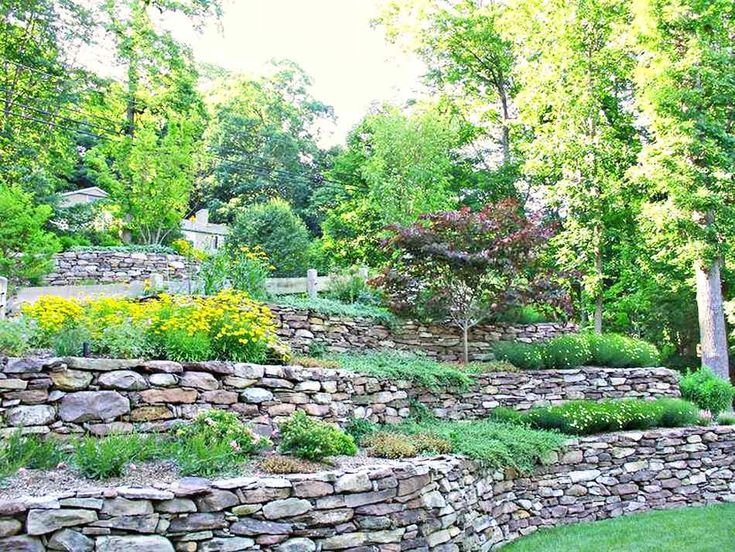
If terracing or walls aren’t in your plans, you can still work with the slope by layering plants in a cascading design.
- Why it works: Strategic planting reduces erosion, covers bare soil, and turns the slope into a lush, colorful backdrop.
- Planting approach:
- Use deep-rooted ground covers like creeping juniper or vinca minor at the base.
- Add mid-height shrubs such as hydrangeas, spirea, or boxwood in the middle.
- Place taller plants or small ornamental trees like redbuds or dogwoods at the top.
- Design tip: Mix evergreen and flowering plants for year-round interest.
This method creates a natural “green wall” effect while stabilizing the slope.
6. Retaining Walls That Double as Seating
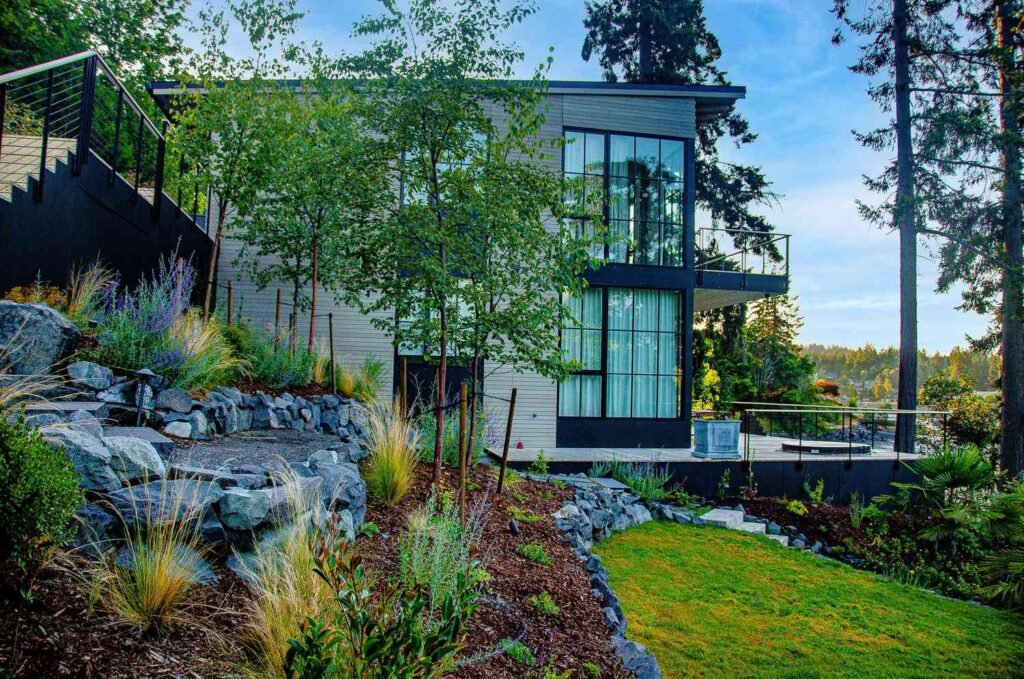
If your slope leads down to a patio or entertainment area, retaining walls can serve a dual purpose: holding back soil while providing built-in seating.
- Why it works: Retaining walls create flat usable space while blending function and design.
- Materials: Stone, brick, or concrete can be capped with smooth surfaces to serve as benches.
- Design tip: Incorporate planters into the wall for greenery and flowers, softening the hardscape look.
This idea is especially useful for families who entertain outdoors often—it combines practical landscaping with social spaces.
7. Meandering Gravel or Mulch Pathways
Instead of a straight, steep walkway, create a gentle meandering path that zigzags down the slope.
- Why it works: Reduces the grade’s steepness, prevents erosion, and makes the journey down the slope more pleasant.
- Surface choices: Gravel, mulch, or stepping stones provide a natural look. For more permanence, use compacted decomposed granite.
- Design tip: Border the pathway with ornamental grasses, perennials, or low shrubs for a framed, finished appearance.
This approach is budget-friendly and adds charm while making the slope far more usable.
Extra Tips for Sloped Backyard Landscaping
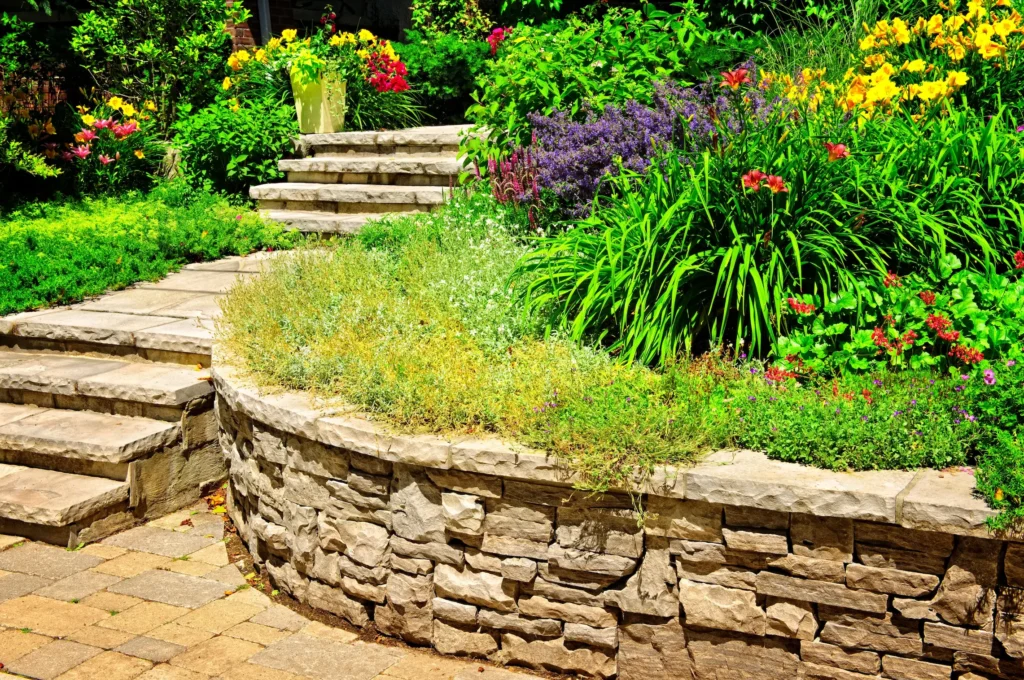
- Erosion control is key: Choose plants with strong root systems (like ornamental grasses) and incorporate mulch or ground covers to prevent soil washouts.
- Drainage matters: Ensure water runoff is directed away from your home and into appropriate channels or features.
- Think long-term: Slopes often require more maintenance—opt for hardy, low-maintenance plants and durable hardscape materials.
- Add lighting: Path lights, stair lights, or uplighting on terraced walls make slopes safer and more visually appealing.
Final Thoughts
A sloped backyard doesn’t have to be a landscaping nightmare—it can become your property’s greatest asset. By embracing the incline and integrating terraces, rock gardens, layered plantings, or meandering paths, you’ll add character and functionality to your outdoor space. Whether you invest in major hardscaping like retaining walls or go for softer solutions like ground covers and pathways, the key is to balance stability with beauty.
With these 7 landscaping ideas for sloped backyards, you can transform a tricky incline into a stunning, inviting space that feels like an extension of your home. Instead of being a problem to solve, your slope can become the highlight of your landscape design.
